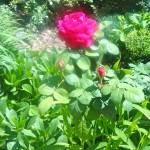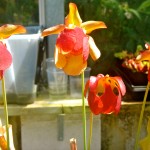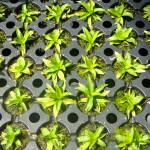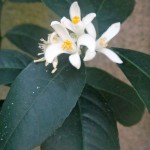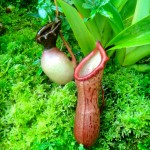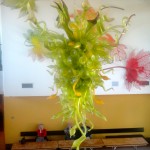This past month I had the absolute pleasure of visiting the Atlanta Botanical Gardens as part of class field trip with my BIOL 4440 Plant Physiology class. Located just up the street from Piedmont Park, a quick 10 minute drive or 30-40 minute walk (for those of us without cars on campus, cough cough, me) from Georgia Tech, the Gardens offer year round awesomeness. My first visit to the Gardens was free of charge thanks to Dr. Jerry Pullman, Georgia Tech’s one and only resident plant researcher. Dr. Pullman works with the Research and Conservation division of the Botanical Gardens to study native endangered plant species such as the Georgia Aster and various types of pitcher plants. Also due to Dr. Pullman’s sweet connections with the Garden’s staff, my classmates and I received a tour of the greenhouses led by the director of Research and Conservation, the lovely and informative Dr. Jenny Cruse-Sanders.
One the most enjoyable indoor exhibits for me was the Orangerie, which allows guests with the opportunity “to see, touch and smell some of the plants which are so important in our daily lives.” The Orangerie includes common foods such as vanilla, tea, coffee, cocoa, ginger, and many others. The botanical geek in me loved seeing these foods in the context of the whole plant, rather than just the isolated products.
The Botanical Gardens work not only with plants, but also animals; in the tropical conservatory, quail and yellow saffron finches can be found among the underbrush and canopy, and snapping turtles and various types of frogs can be found in and around the water feature. My class was also treated to a tour of the amphibian displays and amphibian research lab by Amphibian Conservation Scientist, Dante Fenolio.
The outdoor areas have much to offer as well, including The Edible Garden, The Rose Garden, The Southern Seasons Garden, a children’s area, and much more. The Gardens offer several events and classes, both delicious and educational, throughout the year, as well as volunteer opportunities. The garden is having an Endangered Species Day on June 2nd, where you can learn more about the work the Botanical Gardens do with rare plants and animals. Science Cafe is something I plan checking out soon, a climate change talk series held this May through October on the third Thursday of each month. The series will feature regional speakers discussing different aspects of climate change. This month’s lecture is titled “Pandora Botanicals: What kind of plants might grow on OTHER planets,” led by Dr. Angelle Tanner from Mississippi State University. More information on these events and other information about the Gardens can be found at http://www.atlantabotanicalgarden.org. Happy Exploring!
